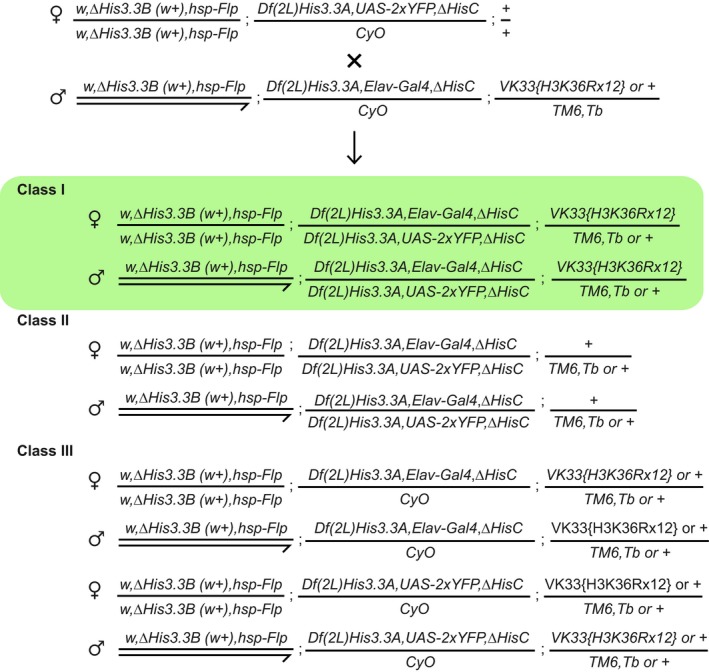Figure EV5. Zygotic replacement of the wild‐type H3.2 and H3.3 histones with H3R36.

To generate the embryos where all zygotic H3 is replaced with H3R36, the w,ΔH3.3B(w + ),hsp‐Flp; Df(2L)His3.3A,UAS‐2xYFP,ΔHisC/CyO; +/+ females (from the stock generated as described in Appendix Fig S6) were crossed to the w,ΔH3.3B(w + ),hsp‐Flp; Df(2L)His3.3A,ElavGal4,ΔHisC/CyO; VK33{H3K36Rx12} or +/TM6,Tb males (generated as described in Appendix Fig S7). In the progeny, all embryos are homozygous for ΔHis3.3B deletion. The YFP‐positive embryos are also homozygous for both ΔHis3.3A and ΔHisC (deletion of histone cluster). From those, the Class II embryos die as they enter the S phase of cycle 15 when the pool of maternally loaded histones is depleted. However, the embryos supplemented with 12 copies of the histone repeat unit from the H3K36Rx12 transgene (Class I, highlighted in green) survive until the first instar larval stage. In these embryos, all zygotic histone H3 has Lys 36 substituted to Arg. Late embryos of this class were collected, genotyped by PCR as described in Appendix Fig S8 to verify their identity and examined for the Abd‐B expression. The remaining embryos (Class III) show no YFP signal since they do not combine the Elav‐Gal4 driver and UAS‐2xYFP reporter.
